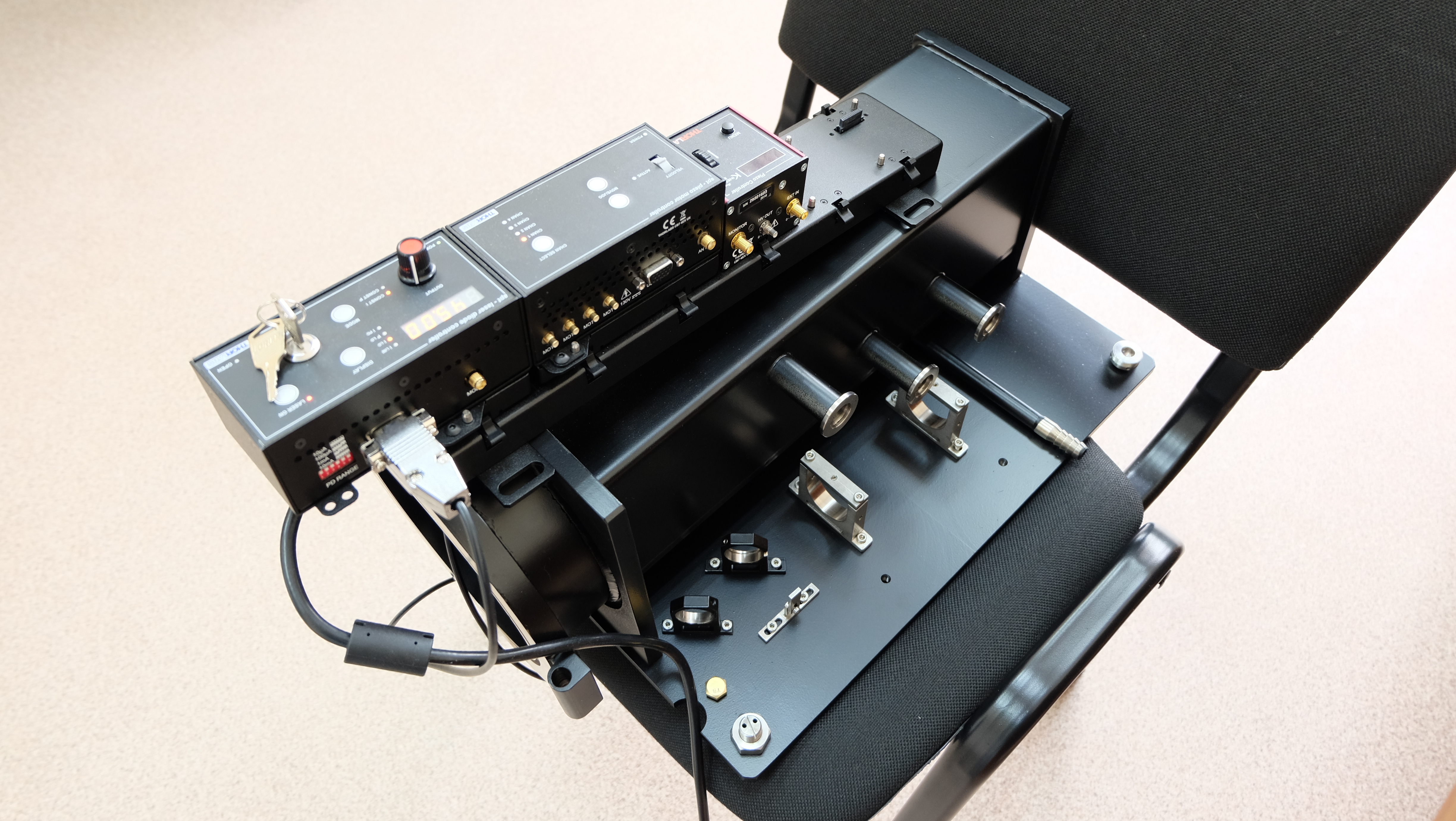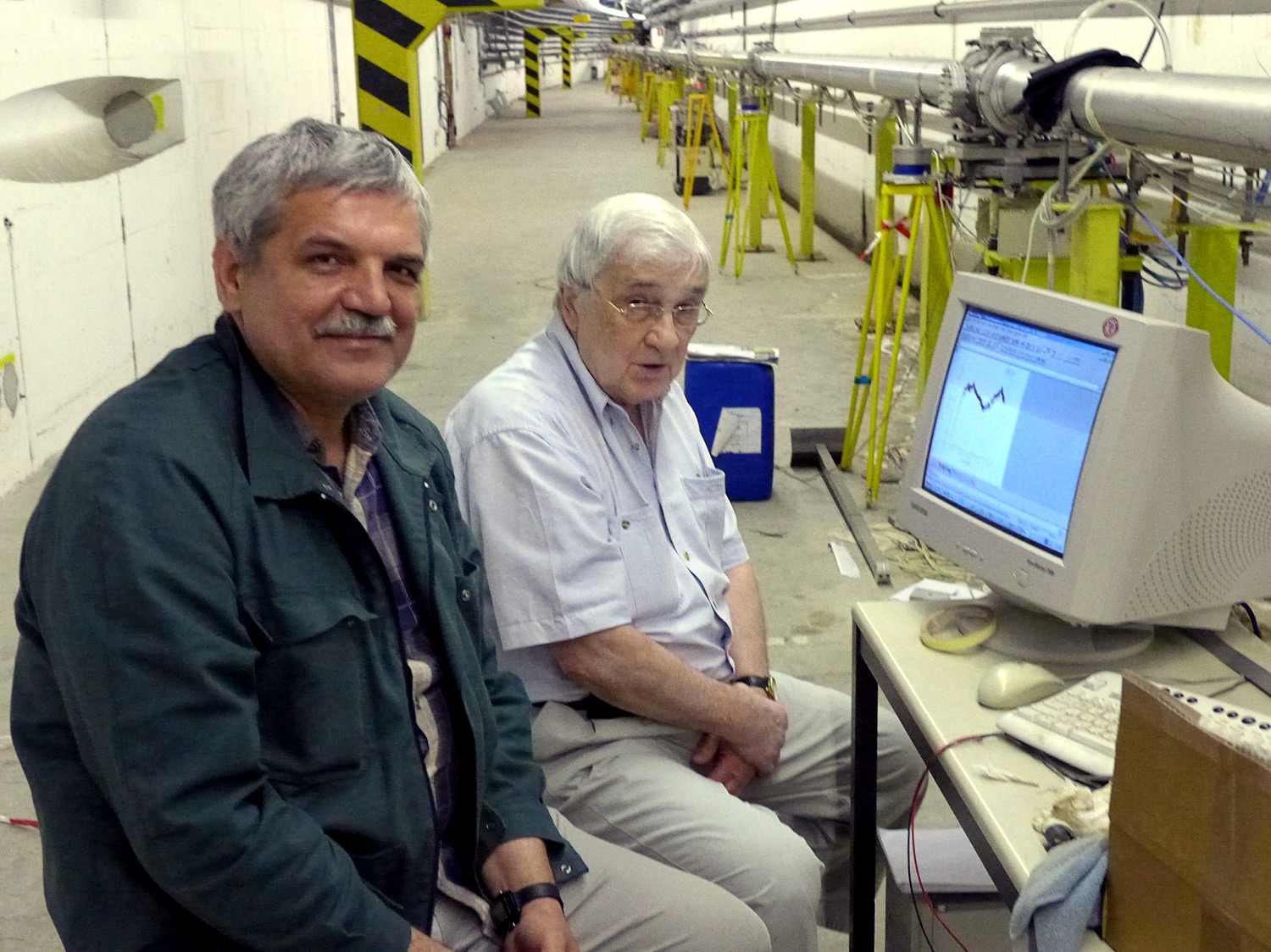JINR inclinometers for stabilization of beam tracks and predictions of earthquakes
News, 21 February 2019
In March, the unique devices for measurement of oscillations of the earth’s surface invented in Dubna will be tested in Geneva. It was reported on by staff members of the Dzhelepov Laboratory of Nuclear Problems JINR J.A. Budagov and M.V. Lyablin in the interview to the First Radio of the Moscow Region “Radio 1”. Three inclinometers were delivered to CERN (the European Centre for Nuclear Research) at the end of 2018. They will be placed at the trajectory of the Large Hadron Collider thus allowing physicists to observe how earth’s vibrations influence the operation of the accelerator. On 9 March, a staff member of the Dzhelepov Laboratory of Nuclear Problems JINR, Candidate of Science (Physics & Maths) Mikhail Lyablin will go to Geneva to check how the supersensitive equipment operates. He informed about it on the “Radio 1” broadcast.
“The equipment is in the transport tunnel in thermally insulated conditions. Testing is carried out in 24 hours. Necessary corrections are made due to daily data collected during a month, and the equipment will be brought into operation then. At the moment, only one device operates in the monitor mode. When we will achieve the non-stop monitoring by all six devices, we will be able to reconstruct the landscape changes,” Lyablin said.
 PLI – Presicion Laser Inclinometer. Photo © JINR
PLI – Presicion Laser Inclinometer. Photo © JINR
Three more inclinometers will be delivered from Dubna to Geneva at the end of 2019. And thus it will become possible to launch the “network” of devices. According to Chief Researcher of the Laboratory of Nuclear Problems JINR, Professor, Doctor of Science (Physics & Maths) Julian Budagov, it is a brand-new event. Devices set up at the trajectory of LHC proton beams will provide most precise data on vibrations of the surface, as a scientist explained to “Radio 1”.
“These oscillations, as we firmly know from experiments, spoil trajectories of beams. A general hope of JINR and CERN scientists is that thanks to this equipment and the data obtained we will avoid vibrations of the surface to at least a certain extent and their negative influence on beams’ properties. It means that experiments will be carried out in a shorter period of time and there will be a large number of useful events,” Budagov noted.
The unique device will help to solve not only scientific tasks but also urgent problems of people: to predict earthquakes at the early stage of landscape changes. Particularly inclinometers allow predicting this natural phenomenon using the quantitative method instead of the statistical one. According to Mikhail Lyablin, the inclinometer has been already assembled for these aims in Armenia in the International Geophysical Observatory in Garni.
 In the photo (from left to right): M.V. Lyablin and J.A. Budagov. Photo © JINR
In the photo (from left to right): M.V. Lyablin and J.A. Budagov. Photo © JINR
“The task is to place the network in the territory of Armenia at intervals of 50 – 100 km to find zones where seismic energy is accumulated, to observe such zones and determine the time of the first crack. The split is formed in the first crack along which the surface slip takes place. It means that the Earth crust bursts and the slip goes down or up. As a result, large oscillations emerge that destroy cities. After the detection of the first crack, it would be possible to warn people, and their lives will be saved,” Lyablin said.
As Lyablin noted, modern seismometers measure the speed of Earth’s surface changes, the accelerating speed but they are limited in measurements of frequencies and cannot measure events more than 20 minutes. Thanks to the inclinometer developed in Dubna, it will be possible to observe changes of the landscape during a year. The device has already interested a Japanese delegation. Scientists firmly believe that it will be necessary for countries placed in seismically dangerous places such as Japan, Iran, Armenia, Turkey and Indonesia.
Following the materials of the radio1.news